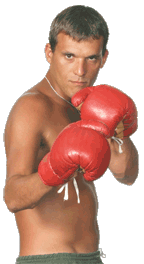At Sports&Hobbies, we're committed to delivering accurate, trustworthy information. Our expert-authored content is rigorously fact-checked and sourced from credible authorities. Discover how we uphold the highest standards in providing you with reliable knowledge.
What is Escrima?
Escrima, or eskrima, is a type of Filipino martial arts that involves fighting with sticks, swords, or knives. Escrima is also often referred to as FMA, an abbreviation of Filipino martial arts; Arnis de Máno, which means “harness of the hand;” Arnis, and Kali. Kali technically refers to just the sword, but is used interchangeably with “eskrima” outside of the Philippines. Escrima’s practitioners, like the art, have many different names, including escrimador, arnisador, kalista, and manangali. The art of escrima predates the Spanish invasion of the Philippines in 1521, when it was taught recreationally along with other standard subjects.
Filipinos wielded their skills and weapons, particularly sticks, daggers and the bolo, a machete-like long bladed knife, in resistance of the Spanish invasion. The Spanish subsequently banned the carrying of bolos or other types during their rule, as well as the practicing of escrima. Filipinos continued to practice in secret, however, and often disguised the fighting art as a dance set to indigenous music. During the many revolts throughout the Spanish rule, escrima reared its head in combat. Even after the United States took over the Philippines in 1898 and lifted the ban on FMA, Filipinos maintained the secretive nature of the art.

Escrima won the respect of many Americans during WWII, when escrimadors fought alongside the Allied Powers against Japan. Filipino immigrants then brought the art to the American martial arts scene. Bruce Lee, trained by a student of an escrimador, carried the art through to the mainstream with stick fighting scenes in his film, Enter the Dragon. Today, FMA is practiced all over the world, particularly in places with high Filipino populations, such as California, Hawaii, and, of course, the Philippines.
Basic escrima fighting concepts and philosophy tends to be simple, because of its original use in battle, when civilians would need quick and effective training. Mastery of technique and more advanced skills, however, take years to obtain and reveal the complex nature of the art. Escrima techniques, weapons, and specialized practices vary depending on the system.
Many systems teach armed and empty-handed techniques simultaneously, so that the fighter is capable of practicing in either situation with equal skill and, oftentimes, similar technique. Others begin with weapons, in contrast to most other martial arts, and teach empty handed technique later. Traditional weapons used in escrima are whips, shields, arm-length sticks, nunchaku, and knives. A fighter may use a single stick, called a solo bastón, or a double stick, called a double bastón.
It is generally agreed that footwork is an important component of escrima, but the particulars vary from system to system. The technique is usually taught as triangles, so that the feet make up two points of the triangle, and the fighter may step with one foot to the third point of the triangle. This prevents the legs from crossing so that the fighter is always in a stable position. Systems that focus on the needs of battle tend to espouse low positioning and preparation for several combatants, while many American systems focus on one opponent and use a more upright stance. Escrima defense commonly emphasizes reacting to angles of attack rather than defending against specific attack moves or strikes.
AS FEATURED ON:
AS FEATURED ON:










Discuss this Article
Post your comments